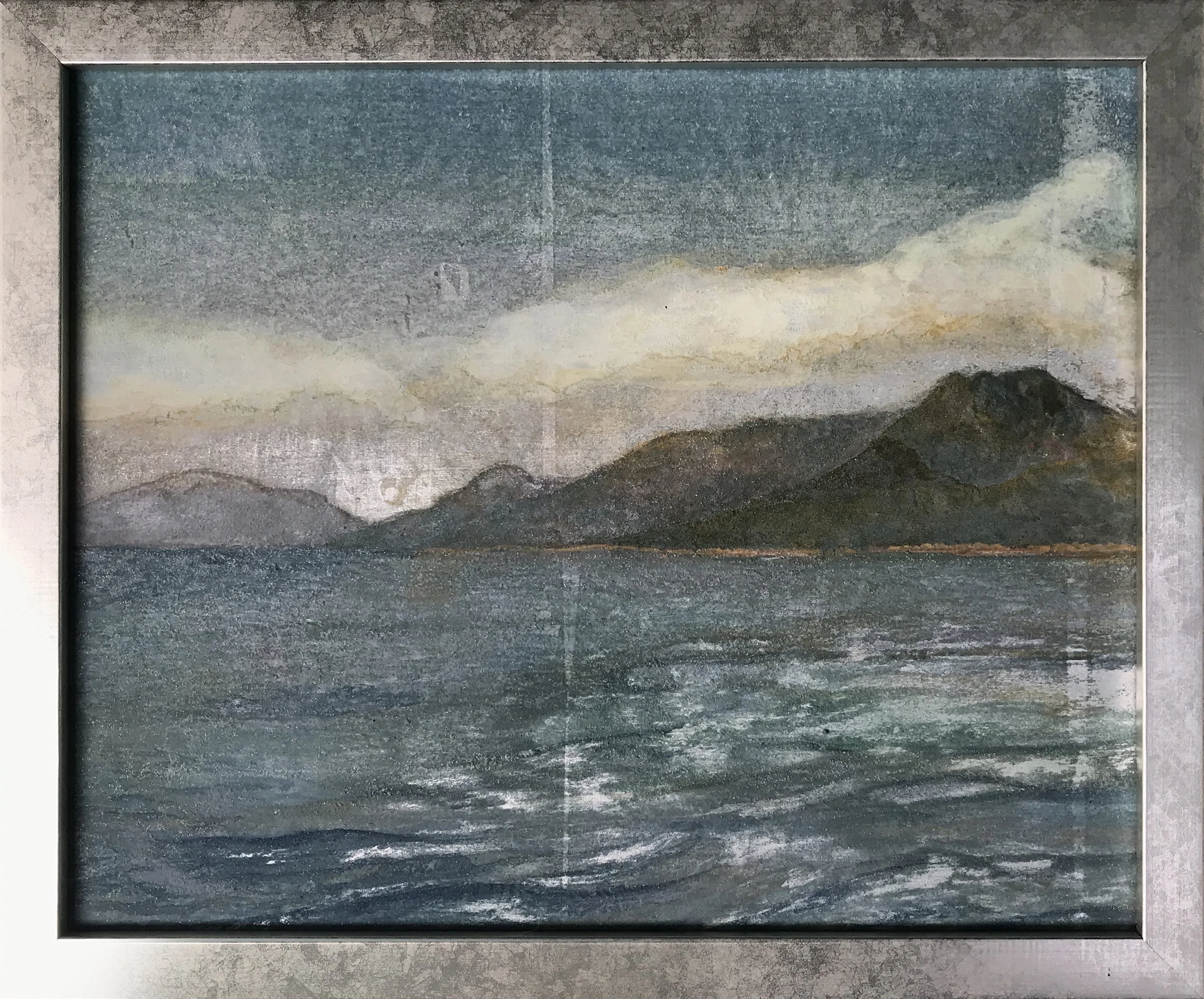
This series of works was inspired by my experience traveling Pre-Pandemic time, especially in 2019 and 2020. As a Young Artist-in-Resident, it allowed me to stay in some places for almost a month or so. It made me reflect more about things in life and grow attached to the culture and people I meet along the way.
In this particular project, the two oceans I painted are based on the two places that resonated with me the most during my research trips. One is the sea in Toba, Mie, Japan and the other one is the sea in Batangas City, Philippines. Although the two places are far apart, they feel very close to my heart, perhaps because of the strong memories I have of them.
“Part of my process is to create intuitively.”

The Sea of Neighborhood - Batangas / 22.3cm x 27.5cm / Japanese Pigment on Wooden Panel with Traditional Japanese Paper with Silver Foil
The Sea of Neighborhood - Toba / 22.3cm x 27.5cm / Japanese Pigment on Wooden Panel with Traditional Japanese Paper with Silver Foil

Originally, Japanese-style painting was based on preparing small sketches, and life-size sketches before creating works in paint. I studied this method at Joshibi University of Art and Design in Tokyo. However, due to the COVID situation, I could not go back to the two seas to make sketches. I relied on photographs and my memory to create my work. In addition, since it had been a while since I graduated, my intention shifted to a more experimental approach, with a slightly different method than what I practiced as a student. This project allowed me to explore my own process and started painting directly with paint on the surface. This process also allowed me to experiment with the usual materials and methods used in Japanese painting. Usually, Japanese paints are applied to Japanese paper pasted on wooden panels. This traditional Japanese technique, which has been used in the past and continues to be used today, is widely practiced especially for those who are majoring in Japanese Painting. The medium is an important element.
But for my process on this project, after pasting the Japanese paper on a wooden panel, I attached a thin sheet of metal (foil) to the paper as a primer and painted on it with Japanese painting pigments. The application of the foil changes the color, texture, and reflection of light. This allowed me to express the reflected light of the sea and the light and air I was feeling at that time.
This work made me reflect on exploring more landscape paintings using the same technique.
Rena Isono
is an artist based in Tokyo, Japan. She studied Traditional Japanese Painting at Joshibi University of Art and Design in Suginami, Japan. In 2020, she joined the International Art Exchange between Joshibi and BMLab for a Young Artist in Residence program before the start of the COVID-19 pandemic. At present, her practice is focused on developing various community engagements in Japan.
Instagram: @i_rena070




